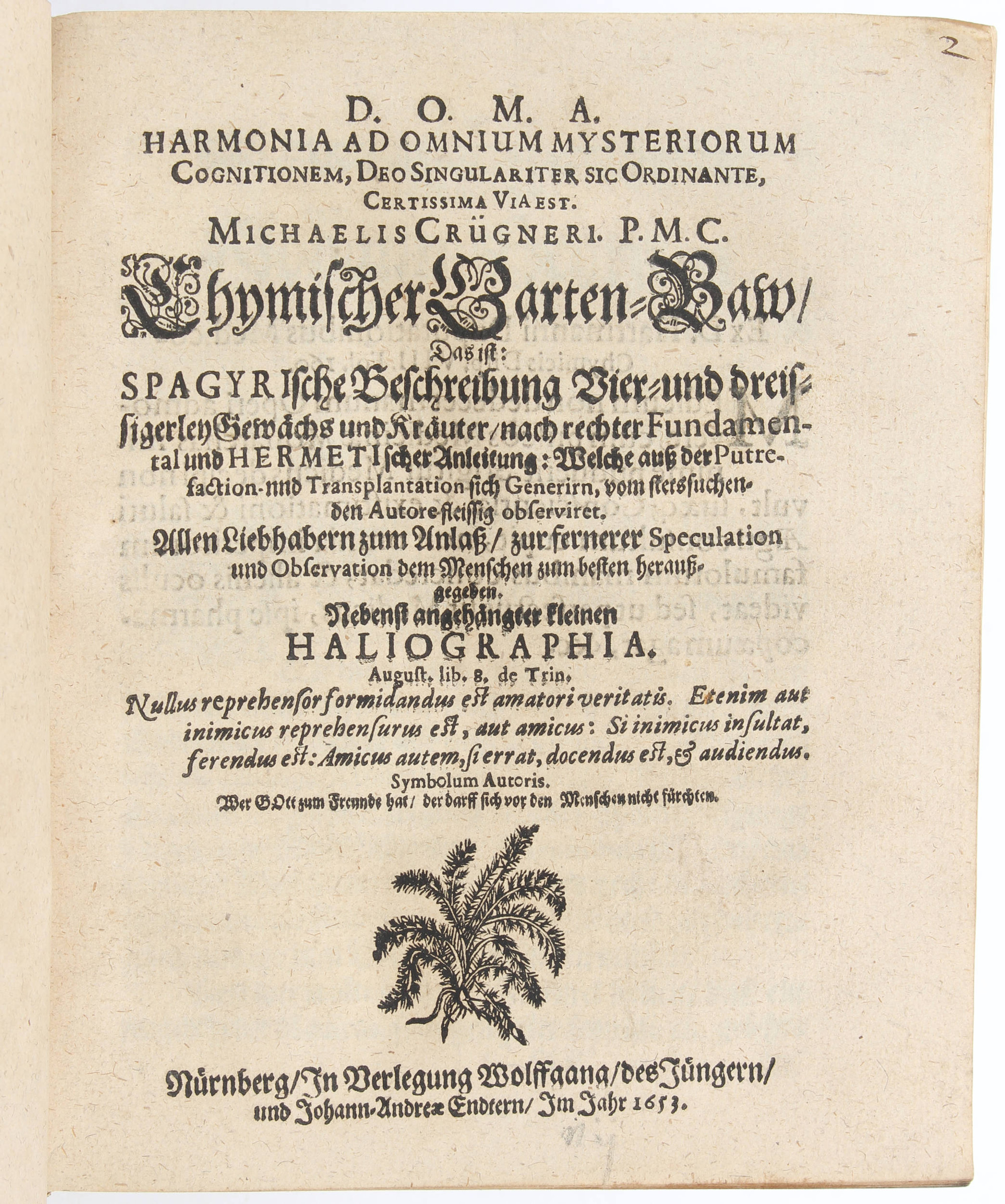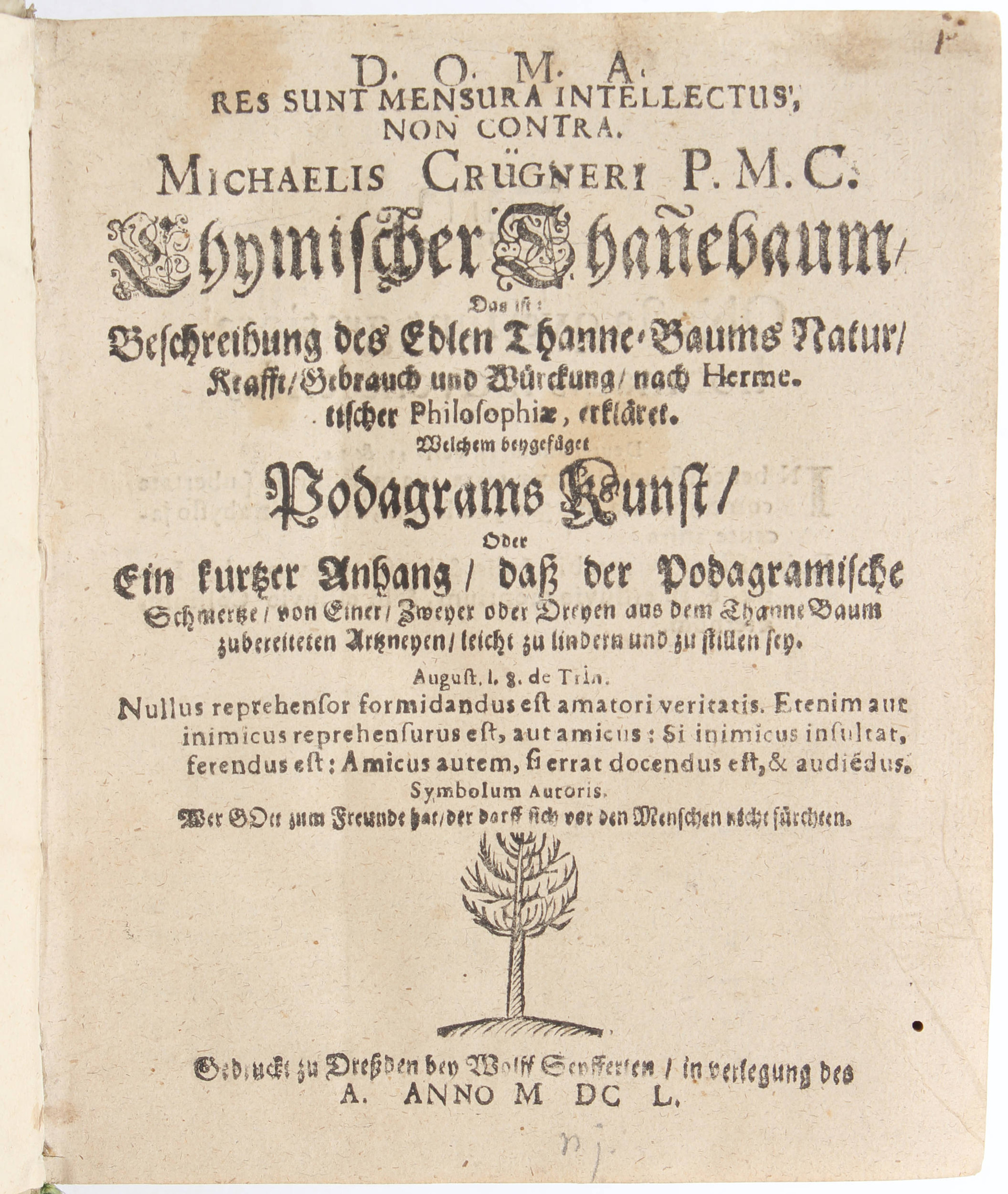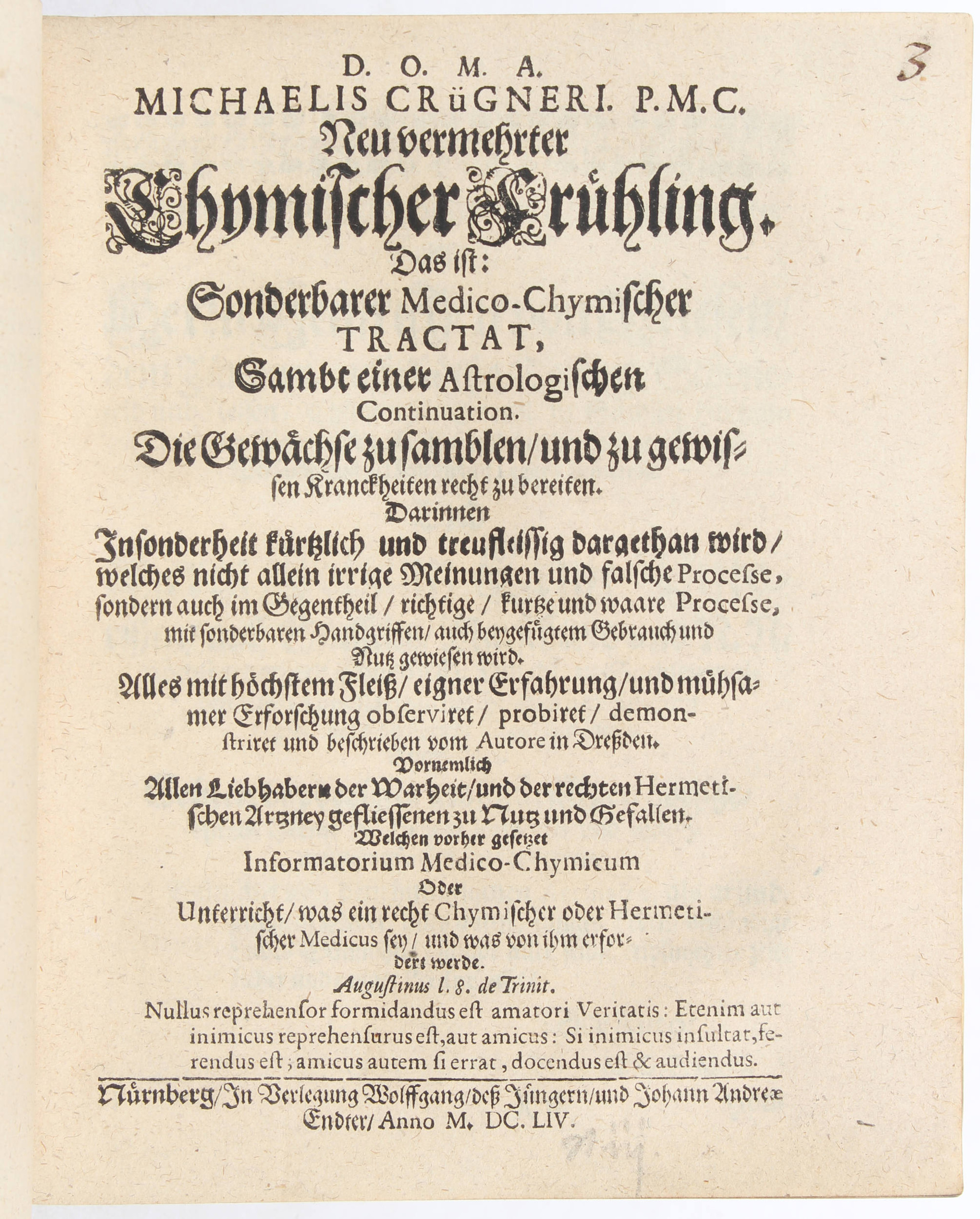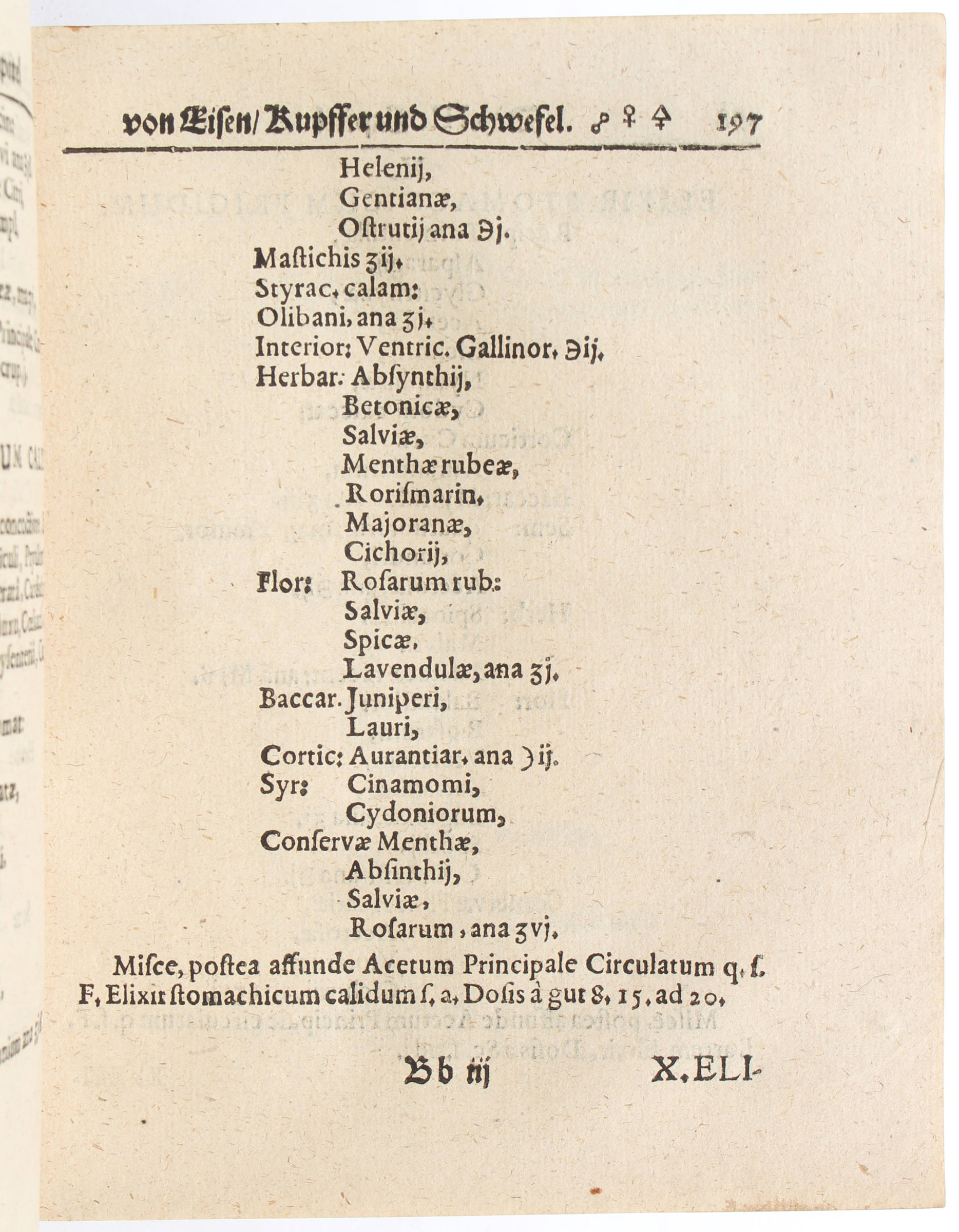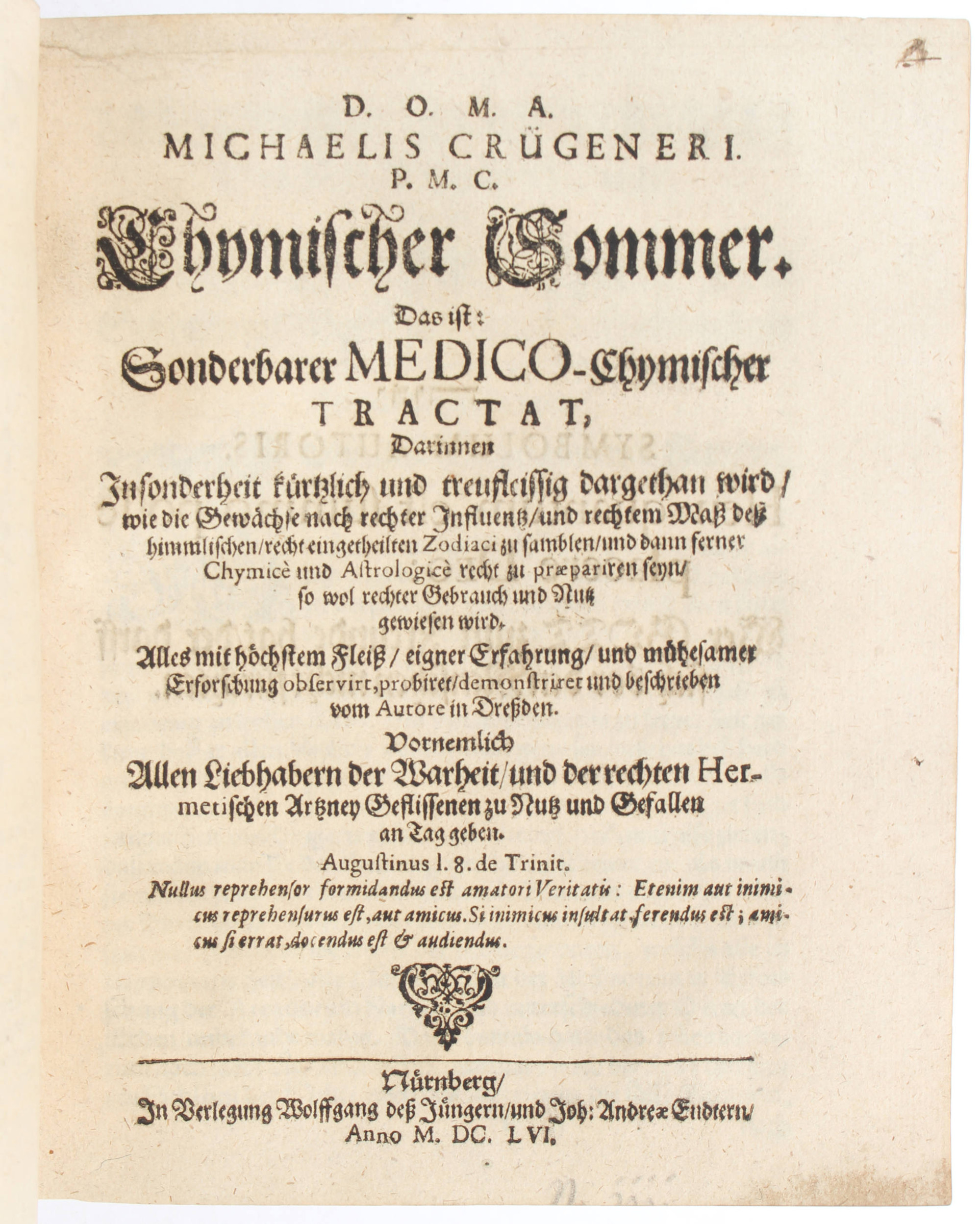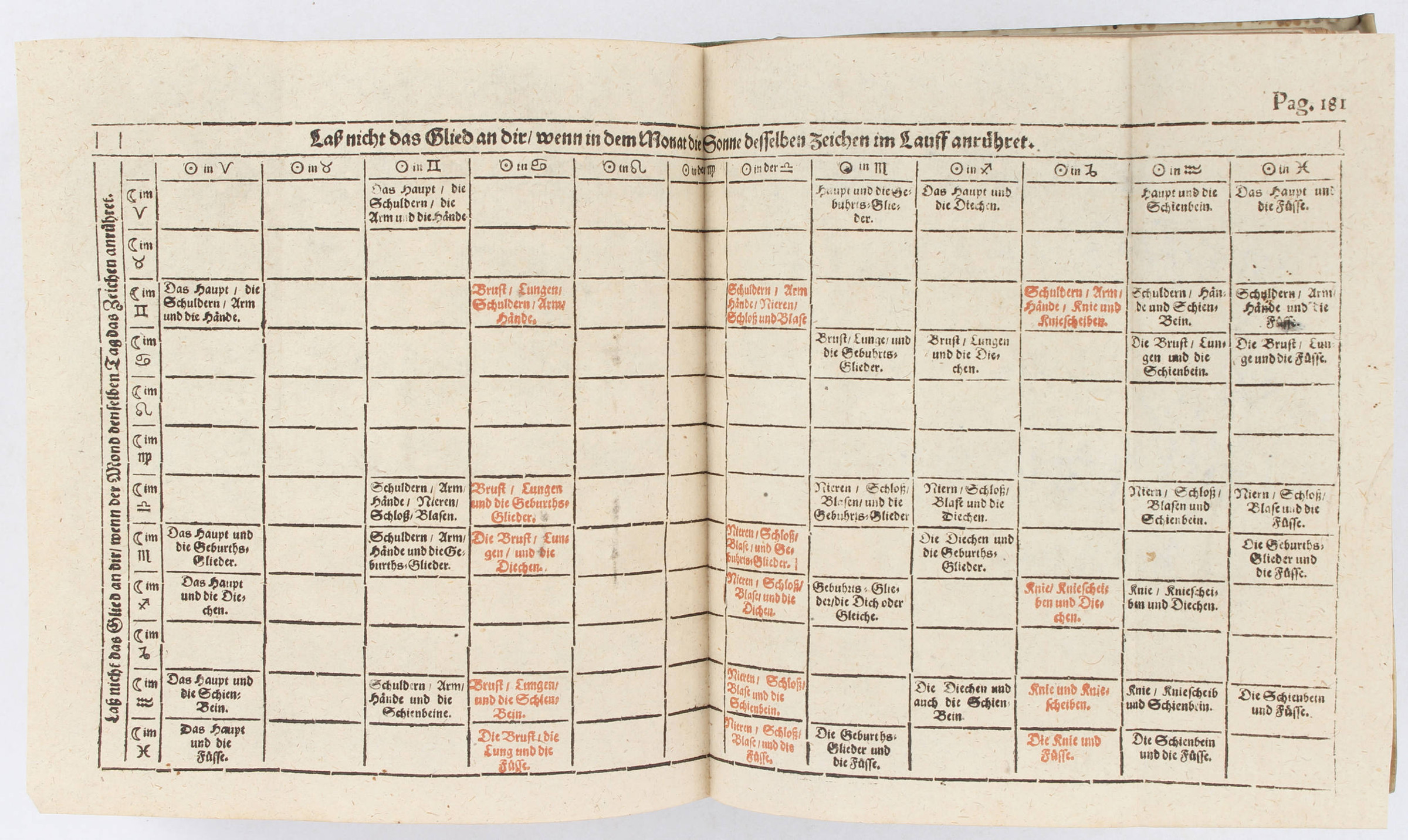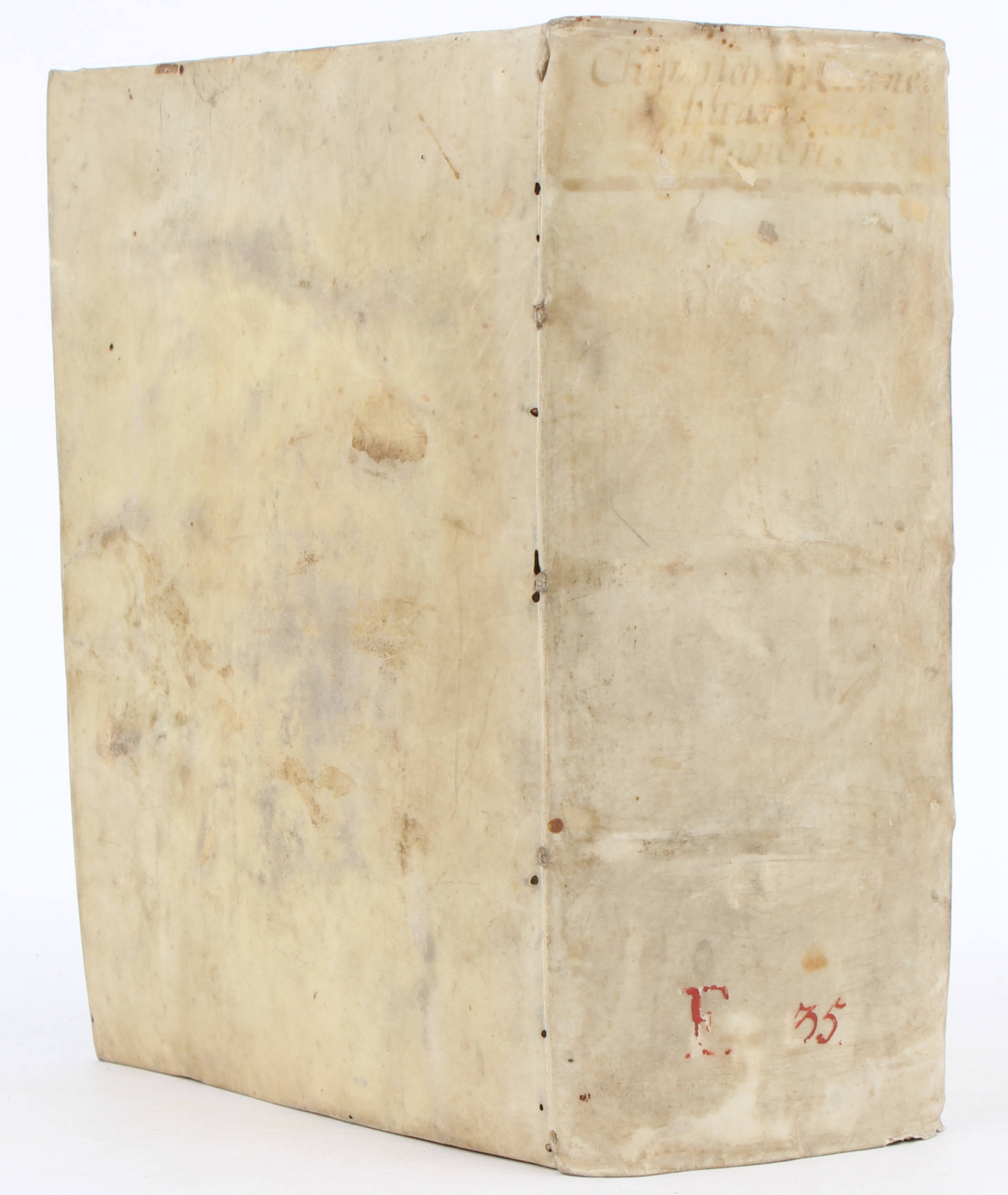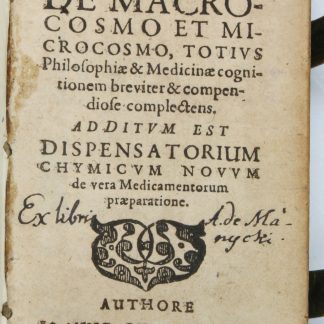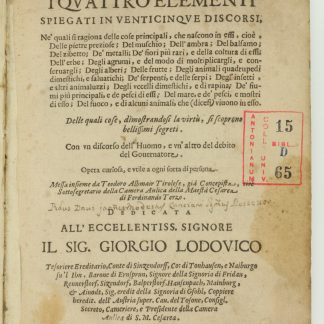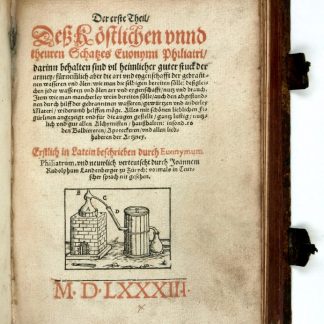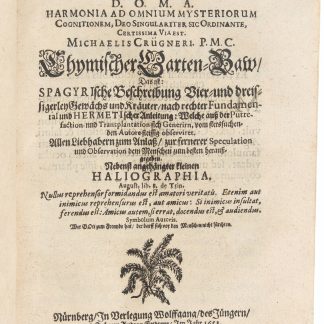From the Chorinsky collection: alchemical theory from Enlightenment Dresden
Chymischer Tannebaum, das ist: Beschreibung des Edlen Thanne-Baums Natur, Krafft, Gebrauch und Würckung, nach Hermetischer Philosphiae erkläret. Welchem beygefüget Podagrams Kunst [...].
4to (160 x 194 mm). (16), 167, (17) pp. With woodcut headers and capitals throughout all texts.
(Bound with) II: Harmonia ad omnium mysteriorum cognitionem [...] Chymischer Garten-Baw. Nuremberg, Wolfgang & Johann Andreas Endter, 1653. 286 pp., final blank leaf.
III: Neu vermehrter Chymischer Frühling. Ibid., 1654. (16), 488, (20) pp.
IV: Chymischer Sommer. Ibid., 1656. (12), 435 (but: 437), (11) pp. With folding table. Contemporary limp vellum, title inked on spine.
€ 12,500.00
A fascinating volume of four 17th century alchemical texts, each rarely available commercially in their own right, much less together. All are by the eccentric Dresden chemist and physician Michael Crügner (1610-82), who was "of the school of the latro-mathematicians or latro-astronomers" (Ferguson I, 190). Here, four of his works provide a rich and strange template for the alchemists of the German Enlightenment. All are first editions, except for "Chymischer Frühling", which is the second edition (first published in 1648).
Crügner belonged to an era with a large appetite for textbooks on the mysteries of alchemy. His works range from Hermetic philosophy to the uses of rotting plants and herbs and to the newly popular medical alchemy. Crügner represents the odd side of the Enlightenment: an age where the rationalist co-existed with little concern or contradiction alongside occult hermeticism. Alchemy, and likely Crügner himself, had a foot in both worlds.
The first two works focus on the uses of herbs and plants in alchemy: Crügner explains obscure remedies taken from the noble "Thanne-Baum", then describes over thirty herbs which may be used alchemically. Reflecting the widely-read, widely-travelled Europe of his times, Crügner "refers to Arabic and Hebrew medicine" and "also mentions American medicinal plants" (cf. Brüning 1831).
In the second half of the volume, Crügner's next two works are titled "Chymischer Frühling" and "Chymischer Sommer", which form a set of medical alchemy texts, such as might have been of particular interest to an alchemist-physician. They describe the use of alchemical plants and other compounds against diseases, and heavily incorporate astrology (itself believed to have a great effect on the human body): "Enthält eine Vielzahl medizinischer Anweisungen und Rezepte nicht nur von Kräutern und alle in Bezug auf astrologische Konstellationen betrachtet" (Brüning 1888).
Taken together, these four works bound as one offer a fantastic glimpse into the trends in alchemy in the 1650s, and trace the life and work of one interesting practitioner.
With the bookplate of of Ignaz Dominik v. Chorinsky (1729-92) on the front pastedown. The Count of Chorinsky's library, assembled after the Thirty Years' War, was rich in alchemy and occult sciences; parts of the library were sold in three auctions by Hans Götz in Hamburg from 1930 to 1931. This copy is from catalogue no. 54, "Library of Chorinski", auction on 16-17 June 1930, No. 1003.
Vellum with expected light soiling; overall a few small stains, otherwise in remarkably good condition.
I: VD 17, 23:291973N. Ferguson I, 190. Brüning 1763.
II: VD 17, 39:143781H. Ferguson I, 189. Brüning 1831. Wellcome III, 410.
III: VD 17, 39:143775G. Ferguson I, 189. Brüning 1855. Cf. Krivatsy 2935.
IV: VD 17, 23:304311M. Ferguson I, 190. Brüning 1888. Wellcome II, 411.

